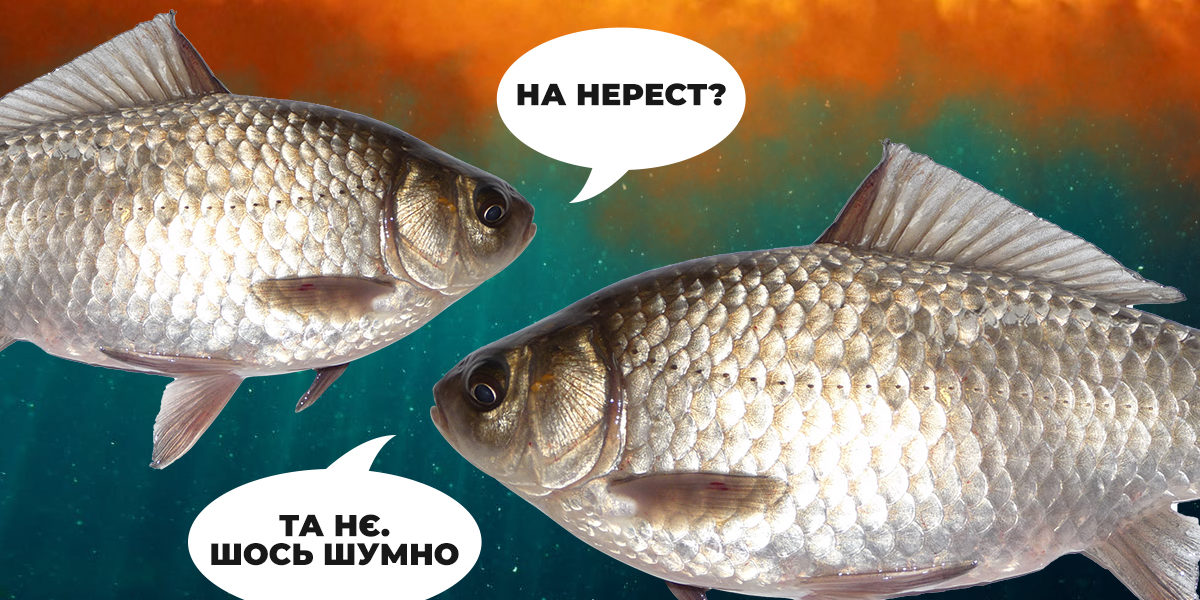Fishing is an important part of Ukraine’s domestic food market. Inland freshwater bodies are a source of at least 16.5 thousand tons of industrial fish species annually, of which up to 14 thousand tons (about 80%) – fish caught in the reservoirs of the Dnieper Cascade and the lower reaches of the Dnieper. It is the main source of supply of fish products to Ukrainians. Mostly it is crucian carp (Carassius carassius), rutilus roach (Rutilus rutilus) and common bream (Abramis brama).
However, all species of Dnieper fish spawn and live in the wild, so maintaining the size of their populations depends on the acceptability of environmental conditions. The key condition is the elevated water level, which in nature corresponds to the spring flood, when fish migrate to flooded shallow areas suitable for spawning. At this time, the use of motor boats, any scaring actions and fishing is strictly prohibited. Its protection during spawning guarantees the availability of sufficient “industrial volume” of fish stocks in 3-6 years.
However, the hostilities of 2022 led to the formation of a radically different picture during the spawning season. For example, in the Kyiv Reservoir, around which large-scale battles unfolded from Kyiv to the most important spawning grounds in the Chernobyl Exclusion Zone. This is especially true for the largest use of rocket fire by russian troops during this time, which took place on March 31.03-01.04 in this area to cover the retreat of the remnants of russian troops.
According to our data, the difficult situation with energy generation and other direct impacts of military threats led to spontaneous releases of some reservoirs (it should be recalled that in March 2010 the descent of Kyiv Reservoir led to the death of great amount of fish in reservoirs). In addition, since the beginning of the war the helicopter has fallen into the water, the fuel stains of which are contaminating the water. And finally – explosions of ammunition, the capacity of which is much greater than domestic versions of poaching explosives, for which criminal liability is provided.
In the conditions of insufficiently state control now, during the spawning period, poaching has spread in many places on water bodies. In particular, the State Agency for Land Reclamation and Fisheries reports on the website of the press centers of Cherkasy and Poltava regions about the fixation of offenses in the second half of March 2022 with the confiscation of a total of approximately 1,900 kg of fish. In addition to excessive damage to biodiversity, the attackers caused significant damage to Ukraine’s fish stocks in monetary equivalent. A special case in Cherkasy region is estimated at more than 1 million hryvnias.
In particular, the State Agency for Land Reclamation and Fisheries reports on the website of the press centers of Cherkasy and Poltava regions about the fixation of offenses in the second half of March 2022 with the confiscation of a total of approximately 1,900 kg of fish. In addition to excessive damage to biodiversity, the attackers caused significant damage to Ukraine’s fish stocks in monetary terms. A special case in Cherkasy region is estimated at more than 1 million hryvnias.
It should also be noted that due to martial law, a number of industrial fishermen of the Dnieper reservoirs did not fish in March, ie the industrial load in the first half of this year was not more than 30% of the average long-term.
The impact of hostilities on the state of ichthyofauna. In the conditions of limited information it is impossible to make any scientifically substantiated conclusions; the assessment of this factor can be carried out only ex post facto. Today, there is no objective information on the deterioration of quantitative and structural indicators of spawning herds (in the context of a significant reduction in the reproductive capacity of populations) and the impact of other factors on the natural reproduction of ichthyofauna of the Dnieper reservoirs in 2022. It is also unknown when it will be possible and safe to assess the status of populations of industrial species in the Dnieper reservoirs.







